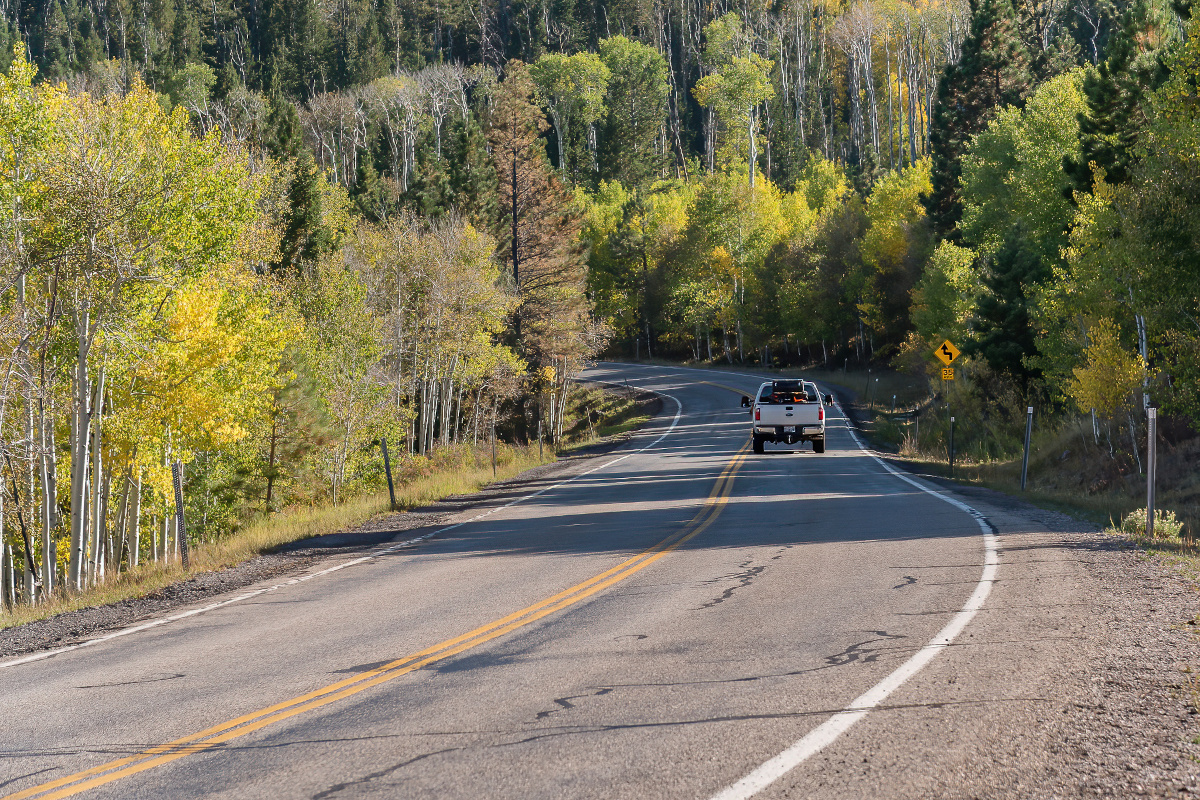
Ah, fall. Is there a more beautiful season in Capitol Reef Country? Truly, every season has something special, but there’s just something magical about this “beUTAHfall” time of year. Surrounded by three mountain ranges of various elevations, the red rock canyons and high plateaus of Capitol Reef Country feature a kaleidoscope of changing colors from September through November, west to east throughout Capitol Reef Country.
Peak Zones
Varying elevations create a multitude of peak fall foliage throughout Capitol Reef Country. Aspen trees between 8,000 and 10,000 feet reach peak color at the beginning of October. Around mid-October fall foliage peaks in Capitol Reef’s red rock canyons amongst the brilliant yellow cottonwoods and box elder trees found at around 5,000 feet. The lowest elevations peak during the last half of October and into early November.
Thousand Lakes Mountain
Fall comes earlier to Thousand Lakes Mountain, the high point of the plateau north west of Capitol Reef. Here, the slopes are alight with color as quaking aspen trees turn shades of golden yellow, adding brilliant contrast to the mountain. Beyond the fall foliage, visitors are in for spectacular views of Capitol Reef and Cathedral Valley.

Boulder Mountain
As part of the Aquarius Plateau, one of the largest high-elevation plateaus in the U.S., autumn colors grace this heavily forested mountain in Dixie National Forest beginning in late September. A drive along Highway 12 delivers visitors to the summit along the eastern edge of Boulder Mountain where pine and aspen trees dot the peaks. Here above 9,000 feet, the fall colors are sure to delight, with expansive views of Capitol Reef National Park and the Henry Mountains in the distance.
Henry Mountains
The remote Henry Mountains comprise two million acres of backcountry beauty, with an elevation range from 3,700 feet at the north shore of Lake Powell to over 11,600 feet at Mt. Ellen. As you can imagine, fall extends throughout the season as it flows over varying elevations.
Torrey and Fruita
At 6,800 feet elevation, autumn in Torrey peaks around early to mid-October, then works its way down into Capitol Reef National Park. The Freemont River rolls down from Torrey through the park, where the waters wind their way through the red rock desert landscape. Fall foliage is vibrant along the banks, as color erupts later into this cool season. At 4,800 feet, Fruita sees fall’s glory later in fall, when cottonwood trees glow vibrant yellow.
Hanksville
Near the junction of SR-24 and 95, Hanksville is the closest town to the north of the Henry Mountains and makes a great home base for exploring the area. At 3,700 feet elevation, the Dirty Devil River near Hanksville will be the last place in Capitol Reef Country to display fall’s colorful foliage.
Whether you’re a Capitol Reef Country tourist or a photographer seeking autumn’s peak foliage, you’ll find a range of brilliant yellows and oranges of aspen trees high in the mountains down to the golden glow of cottonwoods against the red rock canyons at lower elevations all fall season long.
Keep Capitol Reef Country Forever Mighty
What is Forever Mighty? It’s practicing responsible travel while visiting Utah and Capitol Reef Country by following the principles of Tread Lightly and Leave No Trace.
Plan ahead and prepare, travel and camp on durable surfaces, dispose of waste properly, leave what you find, minimize campfire impacts, respect wildlife, be considerate of others, support local business and honor community, history and heritage. Help us keep Utah and Capitol Reef Country’s outdoor recreation areas beautiful, healthy, and accessible.
